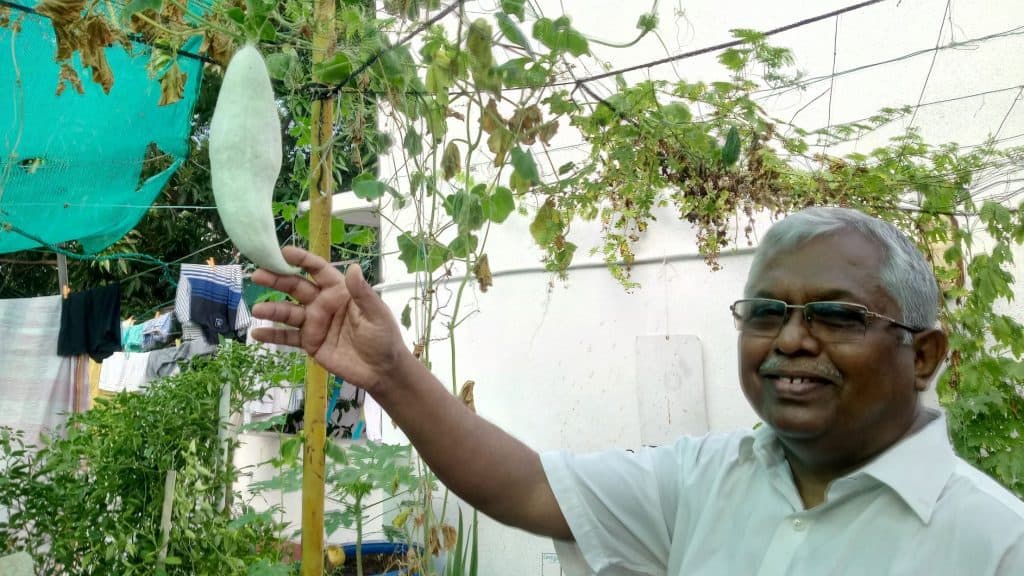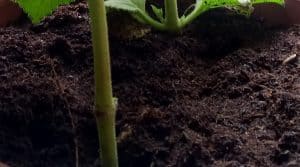Many of us city folks are growing veggies on our terraces and balconies, greening our patch of concrete, staying as eco-positive as we can, but wait a moment… Are we really being gentle on the earth, all the way? Where did it come from – the red soil and the river sand that we use to grow our potted plants?
The fact is, the soil and sand would have been mined or smuggled out from a rice field, river bed, forest or countryside, leaving them that much depleted.
We do know that sand mining from river beds devastates not just the river ecosystem, but also the associated ground water table. This sets off a water crisis (without soil and sand to allow the rainwater to soak in and channel it as ground water, rain just runs off), and cascades into an agricultural, ecological and social crisis. Similar is the effect when we truck away red soil from the countryside and forests.
Some of us may even know that that there is a Supreme Court ruling that insists on Environment Impact Assessment (EIA) notification for all sand mining and gravel collection, one that is backed by an order from the Ministry of Environment and Forests. But somehow, we don’t realise that in buying sand and soil for growing plants, we actually encourage the soil and sand miners.
Why is this important?
Did you know that the earth is actually “running out of soil”? This impending danger stays well ignored, though the writing for it is on the wall. In fact, a ‘What if’ interview with University of Sydney professor John Crawford from the World Economic Forum’s Risk Response Network, in collaboration with TIME, flagged this danger even back in 2012.
Crawford maintained that “the world, at its current pace of consumption, is running out of useable topsoil” and that “because of various farming methods that strip the soil of carbon and make it less robust as well as weaker in nutrients, soil is being lost at between 10 and 40 times the rate at which it can be naturally replenished”. The same article mentioned that earth has just about “60 years of topsoil left”.
So then, if we shouldn’t be taking away soil and sand from river beds, forests and the countryside, what’s the way around this for us urban farmers and kitchen gardeners?
Make your own soil
Well yes, it is possible! An innovative, grand old kitchen gardener-activist in Chennai – retired IRS officer S.S. Radhakrishnan – has worked out a perfect organic substitute to soil for growing plants. Radhakrishnan’s not-so-secret formula for this soil substitute is a mix of coco peat, vermicompost, organic manure, biogas liquid manure (optional) powdered lime chuna, ash, neem cake and Pseudomonas fluorescens (3% of total mix).

Sustainability champion Radhakrishnan is helping Chennai gardeners make their own soil. Pic: Hema Vijay
Does this work? You bet. “Every day, I harvest a minimum of two kilos of veggies, greens and fruits from my terrace garden. And yes, it’s totally soil-free”, he says. He grows everything from greens and beans to pumpkin and papaya, capsicum and curry leaves, tomato and okra, pumpkin and gourds, sweet lime and bananas and more on this soil substitute.
How to make this soil substitute? What are its constituents?
A mix of coco peat (55%), vermi compost (15%), organic manure (15%), biogas liquid manure (4%), neem cake (5%) powdered lime chuna (1.5%), ash (1.5%), and Pseudomonas fluorescens (3%) is what Radhakrishnan has arrived at. Mix the ingredients after moistening the coco peat. If vermi compost and biogas liquid manure are not available, just substitute it with more organic manure. If you are going to use biogas liquid manure, use proportionately less water to moisten the coco peat. You could also used powdered coke from your ironwala in place of ash.
What about grip? Does this organic soil substitute let a plant stay upright?
Herbs, shrubs, small trees, trailers, climbers – all of Radhakrishnan’s plants stand fine on this soil substitute. He shares that while tiny plants like greens don’t need any additional support, you can create support for tall plants like tomato, brinjal and okra by using stay wire bent into appropriate shapes. A single pot would need just two such bent segments of stay wire. Varieties like guava and papaya which give out extensive roots too don’t need this stay wire support. Further, if there are two or more plants in a container, they support each other.
“Even the 2015 December rains in Chennai didn’t topple my plants”, Radhakrishnan says, with satisfaction.
How often do you need to water/moisten the soil substitute?
The water holding capacity of this soil mix is more than that of normal soil, because of the coco peat in it that absorbs and retains water that the roots can draw from. So plants don’t experience a dry spell for 24 hours (or longer) after watering, and your plants don’t suffer as much as sand-soil potted plants, were you to forget or postpone a spell of watering. Loss of water by evaporation or run off is minimized, since the coco peat absorbs and stores the water.
“One gram of coco peat can hold five grams of water, so according to the size of the container and plant we should restrict the supply of water. By experience, we will know just how much water to sprinkle. For greens, just sprinkle some water, for pumpkin plant or a guava plant, irrigate with perhaps three or four mugs of water, enough to keep the soil mix moist, not wet”, Radhakrishnan recommends.
How heavy is this made-up soil?
“This organic soil substitute is over 25% lighter than the soil-sand potting mix and ideal for rooftop gardens and potted plants,” Radhakrishnan shares.
What’s the cost of this soil substitute?
As of now, dry coco peat is available at around Rs. 18 rupees a kilo, vermi compost at Rs. 15 per kilo, ash at Rs. 20 per kilo, lime chuna at Rs. 30 per kilo, neem cake powder at Rs. 30 per kilo and Pseudomonas fluorescens at Rs. 150 per kilo.
The neem cake and Pseudomonas fluorescens double up as natural pesticide, while the lime, ash, organic manure and vermi compost supply the needed plant nutrients, so you don’t have to use additional fertilizers or soil pesticides, except to replenish, though of course you could spray the plants with growth boosters like panchagavya and pest repellants as needed.
All in all, this soil substitute makes for sound economics too.
What are the advantages of this soil substitute?
- You create new soil, instead of ravaging it from the countryside.
- It is lighter than the river sand-red earth mix and so desirable for roof top and balcony gardens.
- The water retention capacity of this soil mix is more, so plants are protected from dry spells, and loss of water by evaporation or run off is eliminated/minimized.
- The constituents of the soil mix double up as natural fertilizers and pesticides.
- Eco-logical, economical, and convenient.
A role model for the environment-conscious
Well, it’s been one green innovation and initiative after another for this retired IRS officer who took to kitchen gardening post retirement and started the civic organization ‘Good Governance Guards’, impassioned with nation-building. He started campaigning for Chennai to emerge as a role-model ‘Kitchen-garden city’, sharing knowledge and gardening services, which has enabled thousands of Chennai citizens to take to kitchen gardening and enjoy its benefits.
Operating from his home in Besant Nagar in South Chennai, Radhakrishnan offers the ready-to-use soil substitute mix (and as its individual ingredients too) at nominal costs, or free know-how on making this soil substitute, if you wish to do it on your own. He can be reached at 98410 23448.
So then, why transport soil and sand and ravage the country side, when we can in fact create some soil and replenish our planet?



Very innovative & interesting!
please message his number or mail id .Baskar 98410 33888